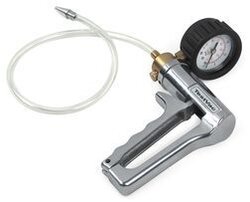I have a 2004 Toyota Tundra that I bought new. I have 36k miles on it. I put 8k miles a year on it currently. I use Mobil One oil and change it twice a year (spring/fall). I am thinking about having the transmision serviced and maybe the radiator flushed. I want to keep the truck at least 20 years (can't afford to buy another one).
Is it better to have the B&G;type flush of the Trany or a regular service where they change the filter? It is a little soon to flush the radiator but it couldn't hurt. Any other suggestion? Thanks.
Is it better to have the B&G;type flush of the Trany or a regular service where they change the filter? It is a little soon to flush the radiator but it couldn't hurt. Any other suggestion? Thanks.


